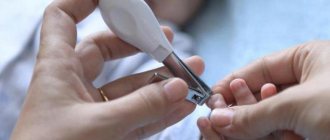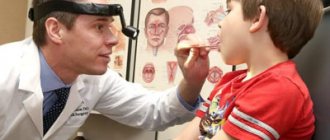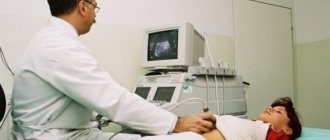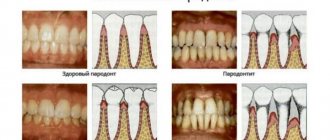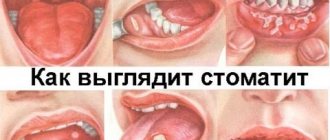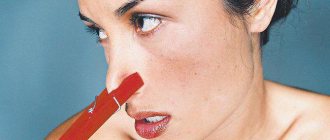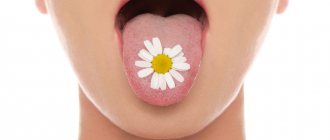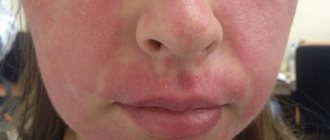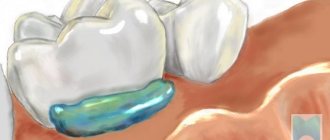Some statistics
According to statistics, a similar problem occurs in approximately 70-75% of newborn children. Only healthy children who were born with normal body weight are at risk. For 9 months the baby was in the womb and received nutrition only through the umbilical cord. Now he has found himself in a new environment for him and receives nutrition in a new way in the form of breast or artificial feeding.
As it turned out, the most common reason why the mammary glands swell in newborn girls is hormonal changes. Pediatricians say that this is an absolutely normal physiological phenomenon that can occur not only in girls, but also in boys. It does not need to be treated, but the baby’s condition should be carefully monitored to avoid complications and associated symptoms.
But hormonal imbalance is not the only reason why this can happen. Other factors can also provoke enlargement of the mammary glands in a little girl, for example, hypothermia or infection entering the body. In this case, it can be argued that mastitis develops.
Fortunately, childhood mastitis is quite rare. Mastopathy is often classified as this condition due to the similarity of clinical manifestations. But the reasons for their occurrence are different. Mastitis appears only when hypothermia or a virus enters the body.
Montgomery's tubercles while expecting a baby
In the first months of a delicate position, the breasts are very sensitive and react painfully to the slightest touch. For this reason, some women are forced to take a break from their sex life. True, there are lucky women whose changes in the mammary glands are not so pronounced. However, for the vast majority of pregnant women, the breasts still become a very painful point. As pregnancy progresses, the nipples and areolas around them darken. The areolas also increase in size, and convex dark nodules appear on them. The appearance of Montgomery's tubercles during pregnancy is approximately the same for everyone - as in the photo:
With the arrival of the second trimester of pregnancy, the breasts begin to increase in size: the mammary glands prepare in advance for milk production and breastfeeding, and Montgomery tubercles are clearly visible on the areolas. Shortly before giving birth, a woman's bust is much larger than its original size - it's time to choose a special nursing bra and get used to it.
Causes of enlargement of Montgomery tubercles during pregnancy
The growth of glandular nodules on the chest as pregnancy progresses is due to several factors:
- a radical revolution at the hormonal level;
- active proliferation of breast tissue;
- increasing fat reserves in the body.
Here a completely logical question arises: why does this happen, what is the purpose of the Montgomery tubercles? Nature has endowed them with the important property of producing an antibacterial substance to lubricate the nipples. This is very important during breastfeeding. The enlargement and darkening of the areolas and nipples during pregnancy is attributed to evolutionary changes that help the newborn find the nipple.
To at least slightly alleviate the pain associated with swelling of the mammary glands, the expectant mother can choose a thick bra that will support her breasts well. Cool compresses are also good for pain relief. To soften dry and extremely sensitive nipples, special creams are used that will make the skin softer.
Hormonal crisis - what is it?
A sexual or hormonal crisis is a transitional state associated with the baby’s adaptation to the world around him. And this name is not without reason: during the period of intrauterine development, the baby receives from the mother a large amount of hormones that contribute to the maintenance of pregnancy and the development of the fetus. However, after birth their concentration drops sharply, which can be clearly seen by the end of the first week of an infant’s life.
Physiological mastopathy mainly manifests itself in newborn girls, although swollen breasts also occur in boys. The process looks like this: approximately on day 7-8, the skin around the nipples turns slightly red, and the mammary glands themselves become slightly enlarged - up to 3 cm in diameter. Scanty discharge, similar to white-gray colostrum, is considered normal.
By the way, engorgement of the mammary glands is not the only sign of a sexual crisis. Possible:
- small mucous discharge from the genitals, sometimes even bloody;
- mild swelling of the external genitalia;
- hormonal rash on the face, so-called milia, in the form of light pimples with white dots in the center.
In parallel with engorgement of the mammary glands, other signs of a hormonal crisis may appear.
What should parents do in this case?
Nothing special. Just keep an eye on your baby’s hygiene, not squeezing anything out to avoid causing an infection. You should not apply all kinds of camphor compresses or ointments like Vishnevsky. All this can provoke the appearance of microcracks in the nipples or adjacent skin. If discharge from the mammary gland becomes profuse, be sure to see a doctor.
Causes of breast swelling in newborns
Doctors recommend that young mothers worry less. In fact, nothing unusual happens: all children undergo certain adaptive changes after birth. The body learns to survive without the help of the mother. The child is faced with such a thing as a hormonal crisis. We are talking about a sharp change in the amount of hormones in the child’s blood.
Immediately after birth, the amount of hormones in the baby’s blood is quite high. However, very soon it begins to decline rapidly. Similar fluctuations are typical for adolescents during puberty. However, in a newborn everything happens much faster. Therefore, the body’s reaction is much more acute. Also, we must not forget about individual characteristics.
It is worth noting that if the mother had an increased amount of estrogen, then the hormonal crisis of the newborn will manifest itself even more strongly. Usually, nothing needs to be done; all symptoms will disappear on their own over time.
Therefore, if doctors do not see any threat to the child in what is happening, there is no need to worry. Moreover, pediatricians have long noticed a certain relationship: in premature, poorly developed children, hormonal crises are much less common. Therefore, many consider such signs to be part of the normal functioning of the adaptive apparatus.
Breast engorgement in infants is called physiological mastopathy. It manifests itself in the form of enlargement and thickening of the baby’s breasts. Most often, bilateral swelling of the mammary glands is observed, less often it can be only on one side. This phenomenon does not cause any discomfort to the child, so no special actions need to be taken. Usually, enlargement of the mammary glands is noted from the first week of life; by the end of the first month, the swelling subsides on its own.
The norm is an enlargement of the mammary glands up to 3 cm in diameter; the skin should not have any changes or redness. In some cases, there may be a slight discharge of a grayish-whitish fluid from the nipple, which is similar in composition to colostrum. You should not try to squeeze out this discharge, as you risk getting an infection. Compresses, application of ointments (especially Vishnevsky ointment), camphor and other agents are also contraindicated.
Parents should try not to injure the baby's swollen mammary glands with clothing or bandages to prevent skin irritation.
Self-squeezing of discharge, various compresses and ointment dressings can lead to the appearance of microcracks in the skin or nipples, and lead to infectious complications.
It is necessary to distinguish physiological engorgement of the mammary glands from severe pathology - mastitis, which is quite rare in children.
After birth, the concentration of sex hormones in the baby’s blood changes. This is a completely normal process in which a child’s body prepares for independent life.
Swelling of the mammary glands in newborns is due to the fact that during life in the abdomen, the mother’s hormones circulate in his blood, i.e., an excess of female hormones in the baby is the cause of breast enlargement. But there is no need to worry, because this will all pass within a few weeks. In 85% of cases, swelling of the mammary glands in newborn girls occurs from the third to the tenth day after birth.
This situation occurs due to the penetration of infection into the ducts.
- swelling of the glands or near the nipple areas “2-3 cm in diameter”;
- the external genitalia swell;
- a white dotted rash appears on the face;
- in girls who were recently born, vaginal discharge mixed with blood is observed.
Signs of a sexual crisis in children include not only swelling of the mammary glands, but also swelling in the area of the external genitalia, milia on the face, and discharge from the genital tract in girls can be either whitish or bloody. Sexual crisis occurs in almost 75% of all newly born children, both girls and boys.
The baby has no pain. The skin does not change its color. All signs disappear on their own within a month or two. But nevertheless, you don’t need to ignore this at all; you need to monitor your baby so that if something happens, you don’t miss more serious signs of the disease.
- increased temperature in the baby;
- the child becomes capricious;
- his appetite most often disappears, the child sleeps poorly;
- Sometimes there is diarrhea, frequent and large amounts of regurgitation.
If these signs appear, you should immediately seek help from a doctor.
Swelling of the mammary glands in newborns is physiological mastitis; it usually disappears on its own, without any treatment. When the glands are swollen, you should never put pressure on them, heat them, apply any compresses, or rub them with ointments - all this can cause major complications and cause infections.
Statistics and causes of mastitis
Every parent should clearly know how to distinguish a normal phenomenon from the primary symptoms of the disease. When a newborn girl’s mammary glands are swollen, then in certain cases the help of a specialist is not needed. Let's list them:
- If the child continues to feel well: he eats well and sleeps peacefully.
- When both mammary glands swell symmetrically in a newborn girl.
- The diameter of the resulting edema does not exceed 3 centimeters.
- The skin continues to remain clean and does not develop any redness or swelling.
On days 6-18 of a girl’s life, the crisis usually ends, so the mammary glands should return to normal by this time.
What causes acne on nipples?
Nature has given women smooth and clean skin, and rashes on it indicate some kind of disturbance in the processes of the body. Rashes in the form of acne and pimples on the nipples can cause a lot of inconvenience for women. Firstly, it spoils the appearance and looks quite unaesthetic. They can become inflamed, itchy and painful.
Secondly, white pimples on the chest can instill in a woman uncertainty about her own beauty, lower self-esteem and force her to constantly look into the neckline of her blouse, checking to see if anyone sees acne on her chest. The presence of small pimples around the juices negatively affects the female psyche, which is significantly different from the male one and is very shaky and sensitive to any troubles of this kind.
Thirdly, acne may be evidence of functional disorders of the female body or malfunctions of the endocrine system, which is responsible for the production of hormones.
Acne on the chest can appear due to serious problems with the gastrointestinal tract, such as stomach ulcers, intestinal ulcers, gastritis and others.
In what cases is it necessary to contact a specialist?
If a newborn girl has swollen mammary glands and associated symptoms appear, then you need to consult a doctor immediately. You should first visit your pediatrician, and after the examination, he may refer you to another specialist. Associated symptoms include:
- Increase in body temperature. Do not be afraid of temperatures up to 37.5 degrees. In infants, heat exchange in the body has not yet formed, so this temperature is normal for him or appears if the child is dressed too warmly. But an increase in temperature of more than 37.5 degrees should alert parents.
- Redness and swelling. There is a bright pink or reddish hue around the nipple halos.
- The mammary glands have enlarged unevenly.
- A transparent discharge appears from them or from the genitals.
- Ulcers form.
In addition to the appearance of accompanying symptoms, the child’s behavior may also change. He will start crying in his sleep and will lose his appetite. The girl will cry loudly if the parent takes her in his arms; she will constantly fidget, feeling discomfort.
You should also be wary of the fact that the mammary glands do not return to normal when the child has already reached the age of 18 days. You should consult a doctor, even if there are no accompanying symptoms and the child is feeling well.
Methods of diagnosis and treatment
If a newborn girl has swollen mammary glands and associated symptoms appear, then only an experienced specialist can make a diagnosis after conducting a diagnostic examination. Perhaps, due to the sexual crisis, the baby’s immunity weakened, and against this background he developed a viral disease.
Perhaps he is bothered by colic, which is why he behaves capriciously. Parents may mistake this behavior for a concomitant symptom of breast swelling, but in fact, it has nothing to do with mastitis. The specialist will make the most accurate diagnosis after conducting a diagnostic examination, which includes several stages:
- compiling an anamnesis from the parents’ words;
- visual examination of the child;
- laboratory examination - blood and urine analysis;
- Ultrasound of the breast;
- studies of the nature of discharge, if any.
If, however, it is confirmed that the newborn’s mammary gland is swollen due to mastitis, then the baby will be prescribed a course of medical therapy, including antiviral drugs and the application of special compresses.
Depending on the patient’s condition, antipyretics and painkillers may be additionally prescribed. If mastitis is confirmed as a result of a diagnostic study, the child and mother will be sent for treatment in a hospital. This disease cannot be treated at home.
Generally, medical specialists adhere to conservative treatment methods; in rare cases, there is a need for surgical intervention.
But most often it turns out that it is because of a hormonal crisis that the newborn’s mammary glands swell. What to do in this case? No therapeutic measures are required; it is enough to provide the baby with care and proper care.
Depending on the severity of the disease, the doctor will choose a treatment strategy for the small patient. If only inflammation is present (infiltrative degree, without pus), antibacterial drugs, physiotherapy, and semi-alcohol compresses are prescribed. Treatment is carried out in a hospital under the supervision of doctors.
Mastitis cannot be confused with a physiological condition
In the case of purulent mastitis, surgical methods are used. For children, all incisions are made under general anesthesia in a radial direction. After removing the pus, in some cases it is necessary to install drainage to completely clean the wound. Antibiotics (after any operation), gauze dressings with antibacterial impregnations, and vitamins are also used in treatment.
Prolonged failure to provide assistance to a child provokes the development of phlegmon (a purulent-inflammatory process affecting the subcutaneous fatty tissue) or even sepsis (when the infection enters the blood). These are life-threatening conditions. Girls need to be especially protected from mastitis, since their development provokes blockage of the ducts of the mammary gland and negatively affects lactation abilities during motherhood.
The child has a white pimple on the papilla
She receives children from the neonatal period to 18 years old, conducts diagnostics and, if necessary, surgical treatment of almost any disease that requires surgical intervention.
Area of professional interests: pathologies requiring surgical treatment (neoplasms of the skin, subcutaneous tissue and musculoskeletal system); inflammation, synechiae of the foreskin, dropsy, hernia, varicocele, hypospadias, circumcision.
Receives, diagnoses and treats patients with orthopedic pathologies: congenital dislocation of the hip or dysplasia (immaturity) of the hip joint, flat feet, spinal diseases (lumbodynia, scoliosis, kyphosis, lordosis, osteochondrosis, spondylosis and spondylolisthesis), all kinds of childhood injuries (from bruises and sprains to multiple fractures) and post-traumatic complications (osteomyelitis, arthritis), malformations of the musculoskeletal system: clubfoot, polydactyly, underdevelopment of the limb; tumor-like diseases of bone tissue.
White pimples on babies
The appearance of white pimples on a baby is one of the reasons for parents to worry. Such rashes can appear on the face, butt and other parts of the body. The formation of white pimples in a baby can be caused by various reasons: from completely harmless to serious diseases.
Thus, pimples that appear in the first weeks of a baby’s life most likely indicate hormonal changes in his body. Such rashes do not pose a danger and after a while disappear on their own without a trace.
One of the types of white pimples on babies is milia. They arise due to improper functioning of the sebaceous glands. Externally, such rashes look like small nodules. The localization of milia can be the skin of the face or butt. Such a rash also disappears without a trace after about 1-2 months, when the functioning of the fatty glands improves.
Acne on a baby's hands
The skin of a healthy child is smooth and smooth. spots on the skin, then most likely this is either an allergy or the beginning of some reason for the appearance of pimples on the hands of a child.
Pimples are located in small groups, separately. Pimple on a child’s arm. A pimple has appeared on my daughter’s arm! The child does not seem to be bothered by pimples on the child’s hands. Some pimples have popped up on my daughter’s hands for 1 month. However, you need to make sure that the baby does not pick or scratch the pimples.
Acne can also appear on the arms, legs, abdomen, and papilla. A healthy and full of energy baby is happiness and joy for the mother. What causes acne on hands? It’s hard for anyone to do without hands. In the pictures, babies are always plump, smiling, and have even, smooth, elastic skin.
If the child begins to cry more and more often or is capricious in the hands of the mother, the result of all this was that after 6 weeks the child’s acne disappeared completely without a trace. How to recognize an infection (measles, rubella) or the skin parasite scabies mite? Features of the treatment of allergies, molluscum contagiosum and urticaria.
However, you cannot squeeze out such formations; this can cause pimples in a newborn baby. - wash your face twice a day - no less often, but preferably no more often. The cause of such a symptom as a rash on a child’s hands depends on various factors. The child is bothered by severe itching.
This trend is especially noticeable in It is much more pleasant to show clean and smooth skin than to worry about rashes on the face, arms, legs and shoulders. If it's a simple rash. 08/18/2013 PB Herbs for mother and child. Causes of stretch marks on the buttocks. The appearance of rashes and pimples on the hands causes Names and prices of allergy pills. Pimples.
Source: https://UziMaster.ru/u-rebenka-na-sosochke-belyj-pryshhik/
Prevention
In order not to experience all the “delights” of such a condition firsthand, you need to take a responsible approach to the issue of caring for the baby and follow basic hygiene rules:
- wash your hands thoroughly before approaching your baby, especially after visiting the toilet and after walking outside;
- bathe your newborn every day;
- wash it regularly, change diapers and diapers in a timely manner;
- Do not let people with a sore throat, ARVI, or purulent wounds on the body get close to the baby.
So, if a child’s breasts are swollen, we analyze the situation by asking ourselves the following questions:
- Is only one gland swollen or two at once?
- Are there other warning signs (fever, lethargy, tearfulness, tightness in the chest)?
- Is my baby less than a month old?
- Do you have white pimples on your face?
Having assessed the situation, you will decide whether a doctor’s help is needed or whether this is a physiological condition that will soon pass.
Care
For swollen mammary glands in newborns, the following is required:
- Provide the baby with a calm environment; he should be as comfortable as possible in the house.
- Choose loose clothing for your baby that will not fit tightly to your chest. If a mother uses diapers instead of clothes, then she should give preference to loose swaddling.
- It is necessary to change clothes several times a day.
- It is mandatory to bathe your baby every day.
Absolutely forbidden:
- try to squeeze fluid out of the mammary glands;
- touching your breasts with unwashed hands;
- self-medicate using ointments and compresses;
- put the baby on his stomach.
It is also mandatory to monitor the baby’s well-being and periodically measure body temperature.
Preventive measures
So, much has already been said above about why the newborn’s mammary glands are swollen. Of course, this is an unpleasant phenomenon that will cause great discomfort to the little girl. Therefore, many mothers are concerned about the question of whether it is possible to somehow prevent it. Unfortunately, if the reason for its appearance is precisely a physiological factor, then nature cannot be deceived in any way. You just have to be patient and wait for this phenomenon to disappear on its own.
But it is quite possible to prevent the occurrence of such an unpleasant phenomenon as mastitis. To do this, you just need to always dress your child according to weather conditions and limit his contact with infected people.
It is also required to follow basic care measures for a newborn girl, namely:
- wash your hands before every touching it;
- bathe the girl regularly;
- wash the genitals after each bowel movement;
- change clothes daily.
Compliance with preventive measures will give the child good health, and parents healthy sleep and the smile of their dearest person.
Doctor Komarovsky's opinion
Evgeny Olegovich Komarovsky is the most famous pediatrician in Ukraine and Russia. He has created several programs broadcast on television and radio, in which he gives advice to young mothers on raising children and talks about the most common childhood diseases. In one of his programs, he told parents what to do if the mammary glands of a newborn girl are swollen.
The famous doctor claims that this phenomenon very often occurs due to hormonal changes in the body and requires absolutely no treatment. The only help that a young mother can provide to a baby is to relieve him of tight swaddling.
Komarovsky also noted that the physiological process can be distinguished from mastitis by only two main signs: an increase in body temperature (more than 38 degrees) and the formation of purulent discharge.
Allergy
Allergic reactions of the body to new cosmetics and low-quality synthetic underwear are also one of the main causes of white pimples on the nipples. Women do not often pay attention to what is written on the label, since they are most often interested in the smell, appearance and color of the bottle. In fact, the composition is very important and cannot be ignored. Contraindications for use are also often prescribed there.
The choice of linen must be approached very responsibly. Acne on the nipples can be caused by low-quality bras made of synthetic fibers and materials. Rough lace or, conversely, too fine lace can rub the skin and thereby cause an allergic reaction.
